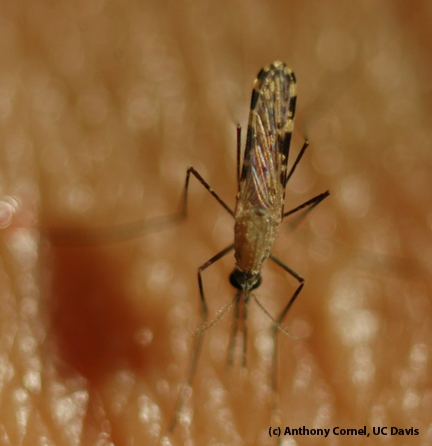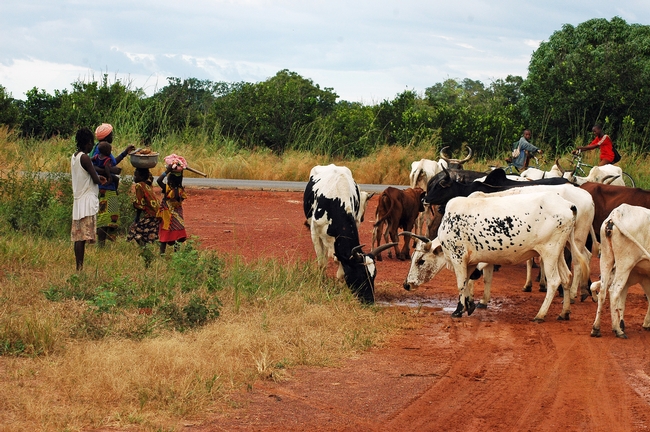
And well it should.
Research led by UC Davis medical entomologists and published in the Sept. 15 edition of PLOS Genetics, indicates "a genetic component" to the blood-feeding behavior and host choice of Anopheles arabiensis.
The research was done in Kilombero Valley in Tanzania.
"We know that blood feeding preference among mosquitoes can be species specific,” said co-author and professor Greg Lanzaro, who leads the Vector Genetics Laboratory, UC Davis Department of Pathology, Microbiology and Immunology and is an affiliate of the UC Davis Department of Entomology and Nematology. “For example, there are mosquito species that specialize in feeding on amphibians or reptiles. We also know that many species are more catholic when choosing a meal and this can have important implications to human health—it's how some disease agents move between animals and humans.”

The publication, titled "The Genetic Basis of Host Preference and Resting Behavior in the Major African Malaria Vector, Anopheles arabiensis, is the work of a 13-member international team.

Medical entomologist and co-author Anthony Cornel of the UC Davis Department of Entomology and Nematology faculty--his lab is based at the Kearney Agricultural Research and Extension Center in Parlier--had this to say about the significance of the research: "From my perspective I would state that environmental anthropogenic influences by replacing natural habitats for human dwelling, need for more food and water by creating more agricultural lands and changing local water patterns, increasing domestic animal rangeland and use of insecticides can have quite dramatic influences of disease vector behavior and their genetic diversity. These changes should be monitored in the overall context of how these mosquito adaptations influence disease transmission dynamics.”
Other co-authors are researchers Yoosook Lee, Heather Ferguson, Travis Collier, Catelyn Nieman, Allison Weakley, all of the Vector Genetics Lab; Katharina Kreppel, Nicodem Govella and Anicet Kihonda of the Ifakara Health Institute, Ifakara, United Republic of Tanzania; and computer scientists Eleazar Eskin and Eun Yong Kang of UCLA.
Their summary?
“Malaria transmission is driven by the propensity for mosquito vectors to bite people, while its control depends on the tendency of mosquitoes to bite and rest in places where they will come into contact with insecticides. In many parts of Africa, where coverage with Long Lasting Insecticide Treated Nets is high, Anopheles arabiensis is the only remaining malaria vector. We sought to assess the potential for An. arabiensis to adapt its behavior to avoid control measures by investigating the genetic basis for its host choice and resting behavior. Blood-fed An. arabiensis were collected resting indoors and outdoors in the Kilombero Valley, Tanzania. We sequenced a total of 48 genomes representing 4 phenotypes (human or cow fed, resting in or outdoors) and tested for genetic associations with each phenotype. Genomic analysis followed up by application of a novel molecular karyotyping assay which revealed a relationship between An. arabiensis that fed on cattle and the standard arrangement of the 3Ra inversion. This is strong support that An. arabiensis blood-feeding behavior has a substantial genetic component. Controlled host choice assays are needed to confirm a direct link between allelic variation within the 3Ra inversion and host preference.”
You can read the paper online in PLOS Genetics.
Attached Images:
